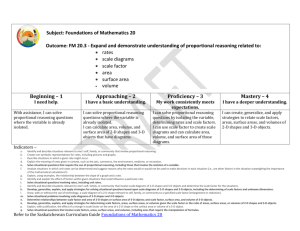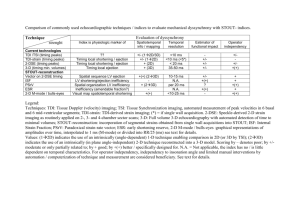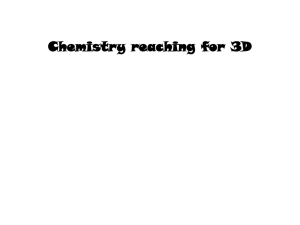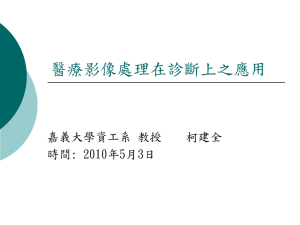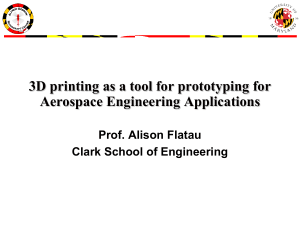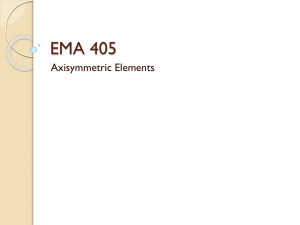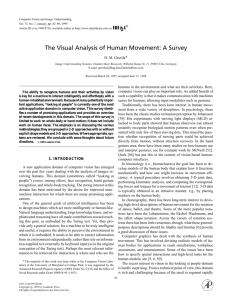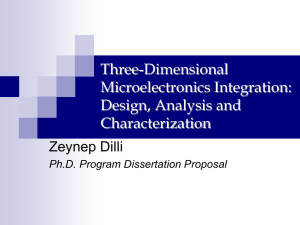3-d and 2-d hand pose normalization
advertisement
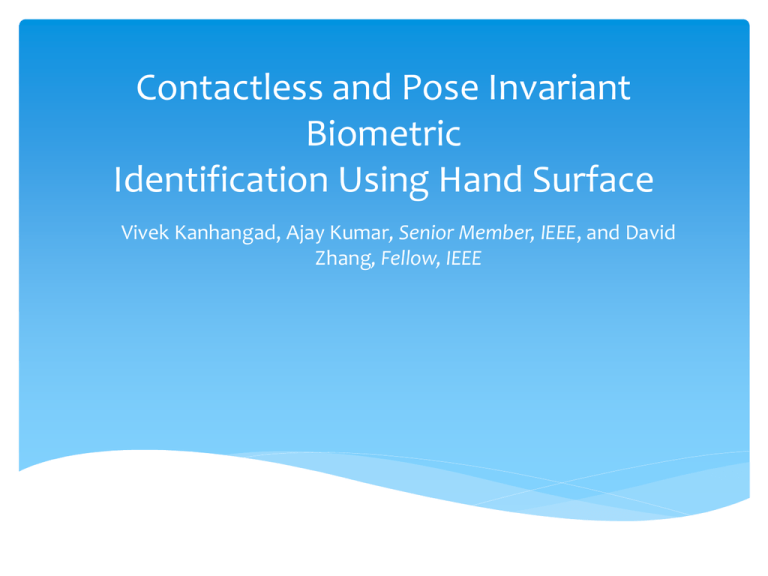
Contactless and Pose Invariant Biometric Identification Using Hand Surface Vivek Kanhangad, Ajay Kumar, Senior Member, IEEE, and David Zhang, Fellow, IEEE INTRODUCTION Image acquisition 1) Constrained and contact based 2) Unconstrained and contact based 3) Unconstrained and contact-free The key contributions : (1) A fully automatic hand identification. (2) Proposed dynamic fusion INTRODUCTION 3-D AND 2-D HAND POSE NORMALIZATION 3-D AND 2-D HAND POSE NORMALIZATION Locate the palm center detect local minima points distance transform 3-D AND 2-D HAND POSE NORMALIZATION 3-D plane fitting iterative reweighted least squares (IRLS) α = [α1, α2, α3]T Xi = [1,xi,yi] ri = (zi - Xiα) 3-D AND 2-D HAND POSE NORMALIZATION normal vector to the plane n = [nx,ny,nz] θx = -arctan(ny/nx) θy = arctan(nx/nz) 3-D AND 2-D HAND POSE NORMALIZATION Fig.5. (a) Sample intensity images with varying pose in our database. using bicubic interpolation filling hole (b) Corresponding pose corrected and resampled images. (c) Pose corrected images after hole filling. HAND FEATURE EXTRACTION A. 3-D Palmprint 3-D palmprints extracted from the range images of the hand. Compute shape index at every point on the palm surface, every point can be classified in to one of the nine surface types. The index of the surface category is then binary encoded using four bits to obtain a SurfaceCode representation. The computation of similarity between two feature matrices (SurfaceCodes) is based upon the normalized Hamming distance. A. 3-D Palmprint B. 2-D Palmprint Use a bank of six Gabor filters oriented in different directions. The index of this orientation is binary encoded to form a feature representation (CompCode). The similarity between two CompCodes is computed using the normalized Hamming distance. C. 3-D Hand Geometry 20 cross-sectional finger segments are extracted at uniformly spaced distances along the finger length. Compute curvature and orientation. D. 2-D Hand Geometry The hand geometry features include : finger lengths and widths, finger perimeter, finger area and palm width. The computation of matching score between two feature vectors from a pair of hands being matched is based upon the Euclidean distance. DYNAMIC FUSION Weighted sum rule based fusion Dynamically weight a match score based upon the quality of the corresponding modality. Ignore the hand geometry information and rely only on the palmprint match scores. w1,w2 and w3 are empirically set to 0.4, 0.4, and 0.2 . DYNAMIC FUSION V. EXPERIMENTAL RESULTS A. Dataset Description The database currently contains 1140 right hand images (3-D and the corresponding 2-D) acquired from 114 subjects. B. Verification Results leave-one-out strategy In order to generate genuine match scores, a sample is matched to all the remaining samples of the user B. Verification Results B. Verification Results Fig. 11. ROC curves for (a)the 3-D hand/finger geometry (b) 2-D hand geometry matching before and after pose correction. (c) ROC curves for the combination of 2-D, 3-D palmprint and 3-D hand geometry matching scores using weighted sum rule and the proposed dynamic approach. B. Verification Results C. Discussion The palmprint features (2-D as well as 3-D) are more suitable to be utilized. The hand (finger) geometry features suffer from loss of crucial information due to occlusion around the finger edges. The proposed dynamic combination approach achieves a relative performance improvement of 60% in terms of EER over the case when features are combined using weighted sum rule. CONCLUSION Slow acquisition speed, cost and size of this scanner As part of our future work, we intend to investigate alternative3-D imaging technologies that can overcome these drawbacks. We are also exploring a dynamic feature level combination in order to further improve the performance.

